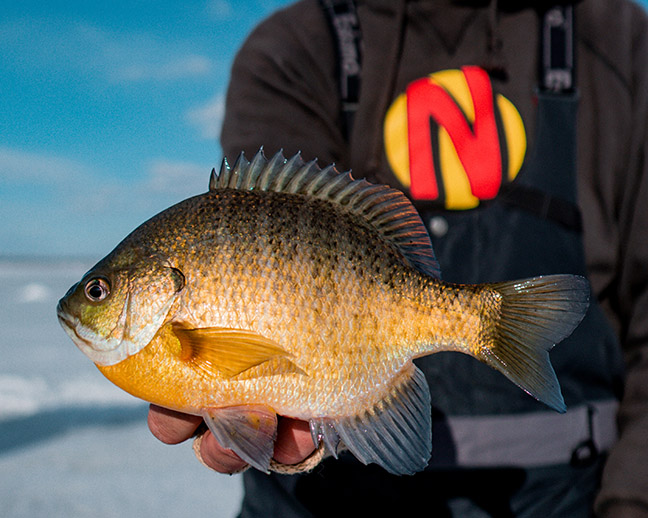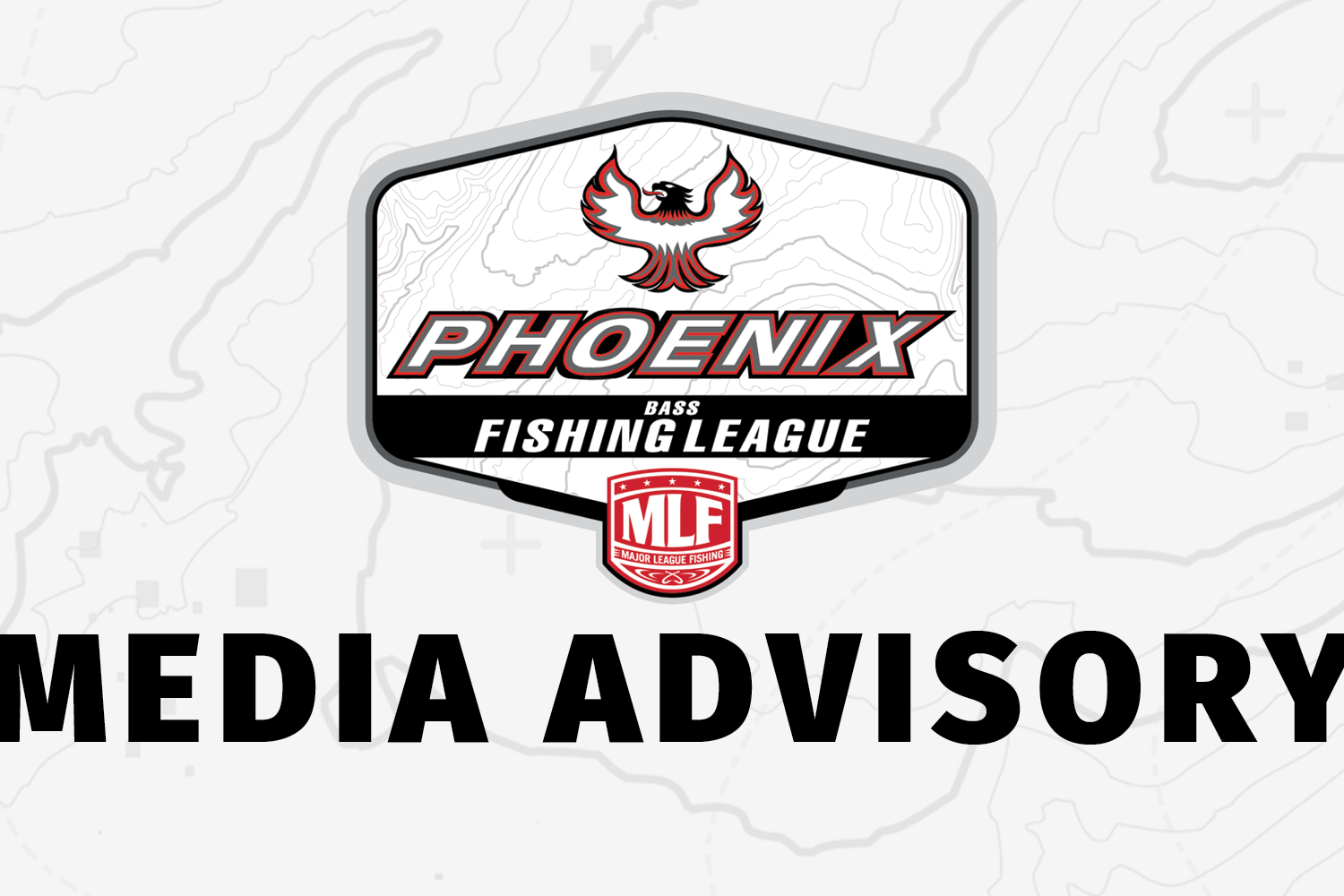Mid- to Late-Ice Walleyes, Panfish, Safety, & More

Two Experienced Northland Pros and Ice Fishing Guides Drill Into Remaining Season Specifics
BEMIDJI, Minn. (February 16, 2024) – It’s been an unusual weather winter for ice anglers – warming trends followed by colder nights, a few colder days here and there—but no consistent ice, which has made ice traffic difficult.
And now that we’re in mid-February—with lengthening days, greater sun exposure, and fish movements—it’s time to talk transition time from mid- to late-ice.
Below, veteran ice guide Brian “Bro” Brosdahl and Mille Lacs Lake expert guide, Brad Hawthorne, literally drill into the specifics of the remaining hardwater season.

ICE SAFETY
Before we get into the presentation specifics recommended, it’s best to remind anglers that there’s no such thing as 100% safe ice. While the MN DNR puts out ice thickness guidelines for certain types of travel, keep in mind those recommendations are for solid, clear ice—far from what we’ve experienced this year. Much of the ice across the belt has formed, melted, thawed, and reformed, leading to inconsistent travel surfaces. There’s been little this year as far as truck travel, with most anglers fishing from ATVs, snowmobiles, side-by-sides, or on foot.
Northern MN guide, Brian “Bro” Brosdahl is constantly monitoring ice quality.
“Right now, we’ve got a snap of colder weather, but it’s supposed to warm up again soon. The first thing: forget about driving trucks and big permanents on the ice. Fish from machine or on foot. And stay away from any areas of current. I don’t ever remember a winter where we had an inch of rain in February. The rivers and creeks raised and the ice started to erode from underneath. Stay away from cracks and heaves, and given the long period where we didn’t have a lot of snow, keep your eye out for shallower areas of vegetation that absorb the sun, as well as bulrush beds. You’ll also want to start looking for southern accesses which should hold up better with decreased sun throughout the day. There are still plenty of spots to fish, just stay away from problem areas. And use established resort roads on the bigger lakes,” offers Bro.
Bro adds: “Wear some kind of flotation—a suit or PFD—carry spikes around your neck, and then a throw rope. Everything you need packs easily in a sled and is there when you need it. And don’t forget cleats on your boots so you don’t fall and get a concussion.”
Mille Lacs Lake Guide, Brad Hawthorne, has similar info to add, but with a slight twist given the size of the lake and its warmer, central MN location.
“There’s anywhere from 8 to 22 inches of ice on Mille Lacs, but it’s not consistent. A lot of the ice is white because of the repeated thawing and freezing, so it’s hard to get a good read on quality without looking at the ice itself.”
Along those lines, Hawthorne has a unique method of ensuring ice is safe for his clients, using both a chainsaw and a 4-inch Razr auger to take ice samples, examining it closely to see if any is honey-combed or solid.
“And if we drill a hole and water gushes out, we carry foot-long fence post pieces to plug them up. Instead of flooding out your whole road or your trail, you can just pop that post in. If it’s below zero, sure you can let the hole flood and refreeze, but above that you don’t want your fishing area to flood, and you want to be able to get stuff through drilled areas later and not worry about the weight on the ice,” instructs Hawthorne.

LATE-ICE PRESENTATIONS
With winter walleye season closing at the end of this month, anglers intent on catching a few will need to move quickly. Of course, there’s always walleye fishing out-of-state—where many of the below presentations will catch fish, too.

BRO FAVORITE: Super-Glo Buck-Shot Coffin Spoon (Super-Glo White)
BRO’S TOP WALLEYE & PANFISH PICKS
Bro says he keeps three spoons rigged up right now through end-of-season for walleyes—and then perch, too.
“I like a Northland Buck-Shot Coffin Spoon in Super-Glo white, a Buck-Shot Rattle Spoon in Golden Perch, and for perch, a Bro Bug Spoon. The first two are standard and work pretty much everywhere tipped with a minnow head, especially if looking for bigger fish. And for those waters where you’re fishing eater ‘eyes and perch together, the Bro Bug Spoon is hard to beat when we get on a bug bite with larvae emerging—not necessarily hatching—out of the soft bottom areas. Given the spoon’s slender profile, you can hang a whole crappie minnow or smaller fathead on it, even as a setline or just slightly moving it once in a while. And jigging the Bro Bug for jumbos—waxies and maggots are a solid bet, too.”
Known for his panfish skills, Bro is looking forward to ongoing panfish movements to late-ice spots.

BRO FAVORITE: Bro Bug Spoon (Wonderbread)
Bro’s Top Three Late-Ice Panfish Baits
“Number one is the Northland Rigged Tungsten Bloodworm with gold jig head and red body. Works everywhere on all panfish. Second is the Rigged Tungsten Mayfly, and lastly, the Tungsten Flat Fry Jig in Purple Wonderbread. It’s been fantastic. I thread the hook with a waxworm and then rig another as a floppy tail. You can also load it up with maggots or thread a waxworm and then dangle a small minnow head off the back.”

BRO FAVORITE: Tungsten Flat Fry Jig (Purple Wonderbread)
HAWTHORNE’S TOP WALLEYE & PERCH PICKS
“With what has been a lack of snow, most of our walleyes and perch have been caught on Forage Minnow Spoons, which don’t have a rattle. The fish have been somewhat spooky. As we’re getting well into February, setlines and noiseless spoons are really what you want to fish on Mille Lacs—Forage Minnow Spoons and Forage Minnow Jigs for both walleyes and some big perch.”

HAWTHORNE FAVORITE: Forage Minnow Spoon (Super-Glo EXO Blue)
BE CAREFUL & CATCH FISH
Yes, there’s still some hardwater action to be had, but with the season’s moving quickly throughout the Ice Belt. Our advice? Be careful, check the ice frequently, carry the right safety gear, and fish in groups. If hesitant, hire a guide like the experts above; after all, they know exactly the safe areas to fish—and catch ‘em, too.


















